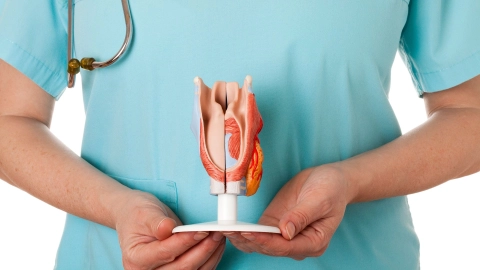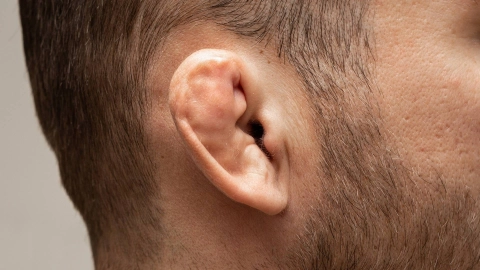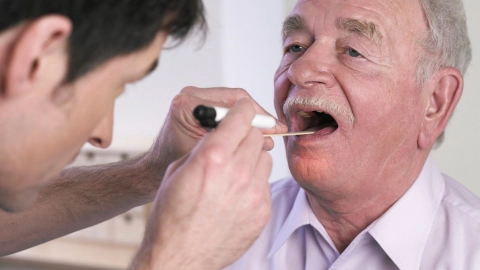Someone who suffers from sinusitis has, for example, a blocked nose and a feeling of pressure in the forehead or jaw.
Find out more
Most people experience tinnitus from time to time, for example after a loud concert. But people with tinnitus hear constant sounds like whistling or humming in their ears without any apparent reason.
Find out more
Middle ear infections are one of the most common illnesses among small children. Children with an infection cry often and complain of pain.
Find out more
Acute tonsillitis is accompanied by a sore throat and fever. Recurring tonsillitis in short intervals can be very difficult to endure.
Find out more
Inflammation of the epiglottis is usually caused by bacteria. Immediate treatment is required, as it can cause acute respiratory (breathing) distress.
Find out more
A throat infection (pharyngitis) is usually caused by viruses. However, it can also be caused by bacteria, such as Streptococcus bacteria. This is known as streptococcal pharyngitis (strep throat).
Find out more
If a painful swelling occurs in a salivary gland while eating, the cause is usually a salivary stone. It is often sufficient to simply stimulate the flow of saliva to flush the stone out.
Find out more
Sometimes, people suddenly suffer a sudden loss of hearing for an unknown reason. Due to the risk of permanent hearing damage, it is essential to promptly seek medical help and treatment if needed.
Find out more
Glandular fever is an infectious disease that is triggered by certain herpes viruses. It is usually transmitted in saliva. Hygiene measures are essential to prevention.
Find out more
Mumps is a viral infection that typically causes swelling of the parotid glands. It can affect both children and adults. Vaccination protects against the disease.
Find out more
In an animal allergy it is not the fur that causes a reaction, but proteins that are found in the animal’s saliva, for instance. Avoiding contact with the animal can help, as can taking medication.
Find out more
Vocal cord nodules typically cause hoarseness. They usually disappear again when the voice is rested or with voice therapy.
Find out more
Scarlet fever bacteria (streptococci) cause an illness in children with symptoms such as a high temperature, sore throat, and a distinctive skin rash.
Find out more
When a person feels dizzy, it may be due to benign paroxysmal positional vertigo. This is caused by deposits in the balance organ in the ear. The dizziness usually stops after a few weeks.
Find out more
Medication can also have undesired effects. These side effects include allergic reactions. When this happens, the immune system reacts to ingredients found in the medication.
Find out more
Laryngitis (inflammation of the larynx) is usually caused by a viral infection of the upper airways. Hoarseness, sore throat and coughing are typical symptoms. The voice needs rest during laryngitis.
Find out more
Significantly more men than women develop laryngeal cancer. Tobacco and alcohol consumption are the main risk factors for the disease.
Find out more
An acute inflammation of the eardrum (myringitis) is caused by viruses and bacteria. Earache is a common symptom. A chronic inflammation often causes no pain.
Find out more
People with hearing loss are limited in understanding spoken language. They are also less able to perceive sounds. If a person’s hearing is (almost) non-existent, this is referred to as deafness.
Find out more
Hearing disorders/impairment in children can have various causes. If the causes cannot be eliminated, hearing aids or auditory prostheses (cochlear implants) can help.
Find out more
A goiter is an enlarged thyroid gland. The most common cause is an iodine deficiency. Various treatment options are available.
Find out more
If a person has “bad breath”, breathing out causes an unpleasant odor. In most cases, good oral and dental hygiene helps relieve the problem. Find out what causes bad breath and how to prevent it.
Find out more
Bruising of the external ear may cause the cartilage to shrivel, fold in on itself and form fibrous tissue, leading to a deformity known as cauliflower ear. This can be prevented by rapid treatment.
Find out more
Oral and throat cancer are tumor diseases that typically originate in the mucous membrane of the oral cavity or throat.
Find out more

















































